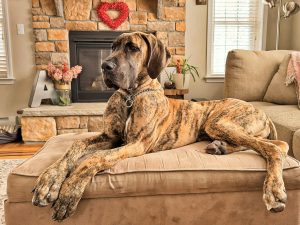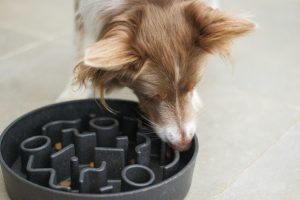
15 Smart Pet Safety Tips for Apartment Living
Living with pets in an apartment comes with its own set of safety concerns. While many hazards are easy to overlook in smaller spaces, they can pose real risks to curious cats and playful pups. From balcony dangers to toxic cleaning products, taking a few extra precautions can make a huge difference in your pet’s well-being. These 15 pet safety tips for apartment living will help you create a secure, comfortable home that protects your pet—without sacrificing convenience or fun.
1. Secure All Windows and Screens
Pets love to perch on window sills, but even a slight push can dislodge a loose screen. Always ensure windows are locked or secured with childproof latches, and check that screens are sturdy and snug. For cats, consider installing safety screens or vertical bars to allow fresh air without risk.
Never underestimate a determined cat or a distracted dog near an open window—even a fall from a second story can cause injury.
2. Hide or Cover Electrical Cords
Puppies and kittens in particular are drawn to cords, but chewing them can cause burns or electric shock. Bundle cords together using cord covers, spiral wraps, or even PVC pipe. Unplug small appliances when not in use and block off access to power strips under furniture.
Bitter apple spray can also help deter chewing, but supervision and cord management are your best defenses.
3. Store Cleaning Products Out of Reach
Many common cleaners—like bleach, ammonia, or pine oil—are toxic to pets. Keep all sprays, wipes, pods, and bottles in closed cabinets. If you don’t have upper storage space, use childproof locks or sealed bins to keep products inaccessible. After mopping or spraying, wait until surfaces are fully dry before letting pets back into the area.
For extra peace of mind, switch to pet-safe cleaning products designed specifically for households with animals.
4. Install Baby Gates to Limit Access
Baby gates aren’t just for babies—they’re perfect for creating off-limit zones in your apartment. Use one to block off balconies, kitchens during cooking, or stairwells in duplex-style units. Choose pressure-mounted gates for easy setup and portability without damaging walls or trim.
For cats, use tall or freestanding barriers to discourage entry without risking injury.
5. Avoid Toxic Houseplants
Many popular apartment-friendly plants—like pothos, lilies, and snake plants—are toxic to cats and dogs if ingested. Before adding greenery to your home, check if it's pet-safe. Opt for spider plants, parlor palms, or Boston ferns instead, and place them in elevated spots to discourage nibbling.
You can find full pet-safe plant lists on ASPCA and veterinary websites.
6. Keep Trash Covered and Secured
From chicken bones to plastic packaging, apartment trash cans can be full of dangerous temptations. Use lidded bins with foot pedals or secure clasps, especially in the kitchen and bathroom. Take trash out regularly, and consider placing a baby gate or closing doors when you’re not home.
Bonus tip: sprinkle baking soda in the bottom of your trash can to neutralize odors that might attract curious noses.
7. Anchor Heavy Furniture and TVs
In small apartments, pets can easily bump into or jump onto wobbly furniture. Prevent tip-overs by anchoring bookshelves, TV stands, and dressers to the wall using safety straps. Secure flat-screen TVs with anti-tip kits, and avoid placing items on top that your cat might knock over.
This is especially important for climbing-prone cats and high-energy dogs that love zoomies.
8. Check for Small Object Hazards
Hair ties, rubber bands, batteries, socks, jewelry—these tiny items are often within paw’s reach in compact homes. Do a weekly floor sweep and couch check to gather anything that could be swallowed. Store cords, buttons, craft supplies, and medication in sealed containers or drawers.
It only takes a second for a curious pet to snatch something dangerous off the floor.
9. Use a Pet Emergency Decal on Your Front Door
In the event of a fire, flood, or other emergency, first responders may not know you have pets inside. A pet emergency decal on your front window or door alerts rescue teams to check for animals. Include how many pets you have and their species for quick reference.
These stickers are inexpensive, easy to install, and could save your pet’s life in a worst-case scenario.
10. Install Balcony Netting or Screens
Balconies can be incredibly dangerous for both dogs and cats—especially in high-rise apartments. Even if your pet is supervised, one jump or slip could result in injury or worse. Install balcony netting or clear acrylic panels to cover open railings, and never leave your pet alone outside.
For more tips, check out the AKC’s balcony safety guide for pet parents.
11. Check for Drafts, Heat, or Cold Near Pet Areas
Apartment temperature control can vary widely between rooms. Make sure your pet’s bed, crate, or hangout spot isn’t next to a drafty window, hot radiator, or space heater. Avoid electric heated blankets or pads unless they’re designed for pet use and automatically shut off.
Keep fresh water available year-round, and adjust bedding seasonally for comfort and safety.
12. Keep Pet Medications Separate from Human Ones
Storing your pet’s meds in your bathroom or kitchen cabinet may seem convenient—but it can lead to confusion or accidental ingestion. Always store pet prescriptions in clearly labeled containers, away from human medication, food, or treats. Use childproof pill organizers or lockboxes when possible.
Accidental mix-ups are more common than you think—and potentially deadly for both pets and people.
13. Avoid Overcrowding with Pet Furniture or Toys
It’s tempting to spoil your pet with towers, beds, ramps, and baskets—but in small spaces, too much gear can lead to tripping hazards or blocked exits. Prioritize versatile, multi-use items and place them strategically. Make sure high-traffic areas are clear so both pets and people can move freely.
Rotate toys weekly to keep things fresh without cluttering your space.
14. Watch for Signs of Boredom or Anxiety
Pets left alone in an apartment for hours may get bored, anxious, or destructive. Scratched doors, chewed shoes, excessive barking, or litter box accidents may all be signs something’s off. Enrich their environment with puzzle feeders, window views, calming music, or pheromone diffusers.
Behavior changes can also indicate hidden hazards or discomfort, so investigate any sudden shifts.
15. Keep an Emergency Plan and Supplies
Emergencies happen—fires, floods, power outages, or even apartment evacuations. Create a small go-bag for your pet with food, water, a leash or carrier, and a copy of medical records. Know the nearest 24-hour vet and have your building’s pet policies posted or printed.
Being prepared ensures your pet stays safe no matter what life throws your way.
Final Thoughts
Apartment living with pets doesn’t have to mean constant worry. With a few smart tweaks and a proactive mindset, your space can be just as safe as any backyard home. These 15 pet safety tips for apartment living are easy to implement and make a big impact on your pet’s health and happiness. A little prevention today goes a long way toward peaceful, paws-itively safe cohabitation tomorrow.
Frequently Asked Questions
What are the biggest pet safety concerns in apartments?
Common hazards include open windows or balconies, unsecured cords, toxic plants or cleaning products, and lack of emergency planning. Apartments often have less space and fewer escape options, so preparation and pet-proofing are key.
Are balconies safe for pets?
Not without proper protection. Pets can fall, slip through railings, or eat plants or objects left outside. Always supervise your pet and install balcony netting or barriers if you plan to let them enjoy the fresh air.
Can pets accidentally start fires?
Yes. Cats and dogs can knock over candles, turn on stove knobs, or chew on cords. Avoid open flames, use stove knob covers, and unplug small appliances when not in use.
How can I prepare for a pet emergency in an apartment?
Have a go-bag with food, meds, and paperwork. Post a pet emergency decal on your door. Know your building's evacuation policies and have a carrier or leash near the exit.
Are pet-safe cleaning products really necessary?
Yes—many conventional cleaners contain chemicals that can irritate your pet’s paws, skin, or lungs. Using pet-safe alternatives reduces risk and gives you peace of mind, especially in smaller living spaces with limited ventilation.

Join the Busy Pet Parent Newsletter!
Get easy routines, time-saving tips, and the latest gear reviews—delivered straight to your inbox.
Perfect for busy pet owners, apartment dwellers, and anyone who wants a happy, healthy companion (without the stress).
Exclusive guides & checklists
Product recommendations & deals
No spam—unsubscribe anytime!




